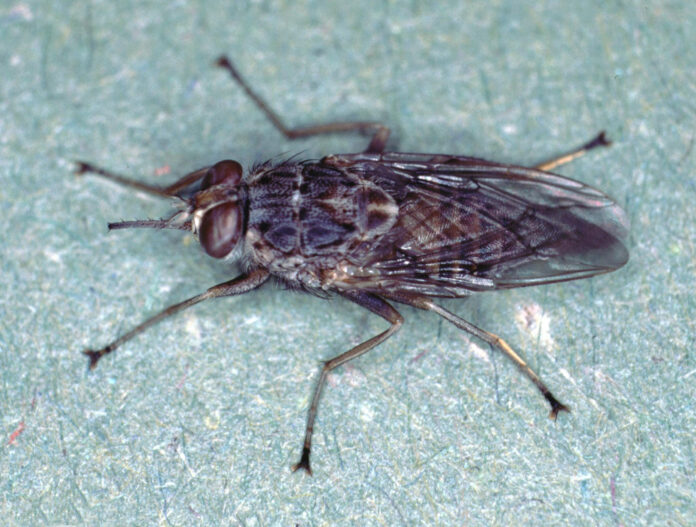The African wilderness is striking in its diversity. Humans may encounter ruthless predators like lions, leopards, and venomous snakes, but the list of the most terrifying animals would be incomplete without mentioning the tiny tsetse fly.
Description
How to distinguish the African tsetse fly? In terms of size and appearance, this dangerous creature resembles its European relatives, but there are four differences from other flies:
- The head ends with a long proboscis for bloodsucking.
- The bristles on the antennae are branched and covered with hairs.
- Sitting tsetse flies fold their wings on top of each other, while ordinary insects leave them spread out.
- The veins on the transparent wings form a pattern resembling an axe.
Origin of the Insect’s Name
The word “tsetse” may seem strange, but in the language of indigenous people living in Central African countries, it means “livestock killer.” The blood-sucking fly infects animals with nagana, a disease transmitted by trypanosome parasites.
Wild animals such as antelopes, warthogs, and hyenas have developed immunity. However, domesticated camels, pigs, buffaloes, sheep, horses, and dogs perish. Tsetse flies kill up to 3 million heads of cattle annually. For local farmers who cannot afford to purchase vaccines, this is a real disaster.
Habitat
The tsetse fly is widespread in equatorial and subequatorial zones of Africa, covering 37 countries. It feels comfortable in places with high humidity. Science knows 23 species of these insects. Tsetse flies predominantly inhabit moist areas and prefer to settle in tropical forests.
Tsetse flies have taken a liking to fertile lands on the banks of rivers, displacing people further inland. The silent killer, as it is also called, flies swiftly and silently, and both males and females should be wary.
The Tsetse Fly Can Be Dangerous to Humans
A person bitten by this insect is at great risk. Protozoan microbes related to amoebas enter the bloodstream from the parasite’s saliva. Then, a severe disease develops, which, without qualified medical help, can lead to a fatal outcome. The affected area swells, body temperature rises, limbs become numb, joints ache, and drowsiness occurs. The body gradually weakens, and trypanosomes destroy the nervous and immune systems.
There are two types of sleeping sickness:
- Gambian
- Rhodesian
In the first case, the disease lasts from one to five years, with symptoms not always present. In the final stage, paralysis sets in, and mental abnormalities are observed. The Rhodesian form progresses rapidly, with clinical signs appearing almost immediately. Death occurs within a few months.
If medical attention is sought in time, the consequences will be minimal. Effective drugs have been developed that destroy trypanosomes. It is not worth ignoring sleeping sickness: these drugs have many side effects, and the pathogens actively mutate.
Interesting Facts About the Tsetse Fly:
- The deadly insect is considered one of the most dangerous on the planet.
- Zebras are the only animals not afraid of tsetse flies because they repel them with their stripes.
- Tsetse flies choose the hottest objects, considering them the most appetizing. For example, they can hunt for a car engine, ignoring people standing nearby.
- Even if a tsetse fly is severely injured, it will still attempt to bite its victim.
- About 70 million people from the poorest countries in the world are constantly at risk of infection.
- All species of tsetse flies are viviparous, mating only once and producing 2-3 larvae per month.
- Territories where tsetse flies are found are uninhabited, even poachers avoid them. Thanks to this, unique African landscapes remain untouched.
